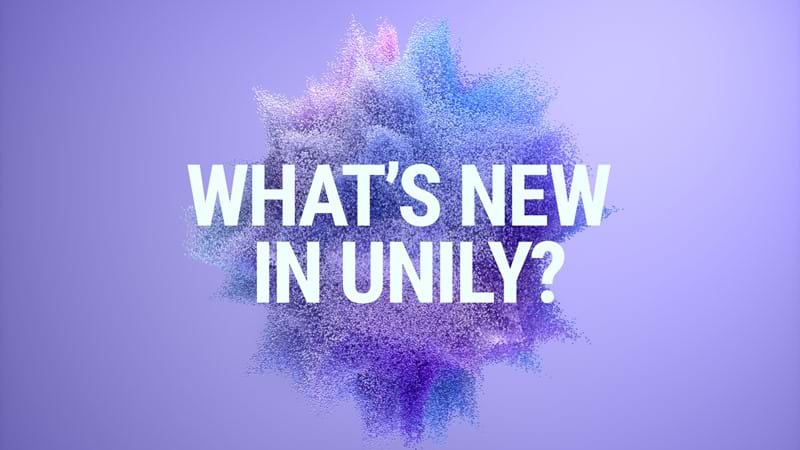Are you an inclusive internal communicator?
Are your internal communications inadvertently leaving some employees feeling excluded? If you’re not paying attention to these four pillars of inclusive communications, you might think your internal comms are inclusive, but you could be missing a trick.

How to be an inclusive internal communicator
Inclusivity is the buzzword of today’s workplace. Countless research studies reinforce that internal comms are more focused on promoting diversity and inclusion than they ever have been. And for good reason! Internal comms is a vital piece of the puzzle when it comes to creating the diverse and equitable employee experience we’re all striving for.
When it comes to promoting an inclusive workplace, talking the talk is nearly as important as walking the walk! The way we communicate has to be as inclusive as the opportunities we talk about. So how do you ensure your internal communications approach is truly inclusive?
The four pillars of inclusive internal communications
These four pillars of inclusive communications can be used as a checklist to review your strategy and your individual campaigns against to identify areas where you could do better.
Pillar #1: Language is everything
As communicators, we know that words carry weight. But with heavy workloads and a burgeoning raft of responsibilities, it’s not always possible to take the time to review some of those language habits that might be leaving some people feeling ‘othered’. Inclusive language makes everyone feel welcome, valued and part of the conversation.
The language pillar of an inclusive comms strategy isn’t just about making sure content is available in everyone’s native language – although that is an important part. Examining our unconscious biases and taking the time to review or create your internal communications code of practice is the starting place for ensuring internal communications and inclusive.
When it comes to developing a more inclusive vernacular, there are a few basic rules:
- Watch out for acronyms and jargon
When you’re communicating with your immediate teams, there’s probably a host of acronyms and jargon that you use every day as a shorthand for what you really mean. But when your audience spans regions, continents and departments, you can’t rely on everyone having the same understanding. Ensuring your copy is clear and that you’re explaining any terms that might be unfamiliar is step one to making everyone feel considered.
- Avoid gendered and discriminatory terms
It’s surprising how easy it is to revert to gendered or discriminatory language without realising it. Words like manpower and blacklisted are built into the vernacular but recognizing the weight of these words and the power of the connotations is a crucial part of adopting a more inclusive communications style. Not everyone will be sensitive to their use, but inclusive communications are about accommodating those that are. An awareness of the stereotypes you might be perpetuating through unconscious word choice is an important part of evolving your communication style to make sure everyone feels included.
- Uncover your hidden bias
Being aware of your own hidden bias is a crucial step to becoming aware of the prejudice you might be prone to unconsciously perpetuating. We’re all a product of our environments and it’s very likely that you have hidden biases that you’re not aware of. Uncovering our biases is about uncovering opportunities to learn and evolve the way we think.
These resources are a great place to start when it comes to assessing your language habits and uncovering your hidden biases:
- Test your hidden bias: Use these tests by Learning For Justice to learn more about the hidden biases you might hold
- Deepen your understanding: Watch this short video by MTV to understand more about the negative roots of common language
- Proof your copy: Use this free tool to check your copy for language that perpetuates negative stereotypes

Pillar #2: Every channel counts
Reaching every employee with communications is the holy grail of every internal comms team. You’re never going to get 100% engagement with every communication, but to get close you need a strong understanding of what channels different employees use and when they use them. Ensuring everyone has access to comms is arguably the most important part of creating an inclusive internal communications strategy.
Performing a channel audit to get a good understanding of available channels is step one. But actually leveraging every channel is a different ball game. Without the right tools, executing a multi-channel internal comms strategy is a time-intensive task.
What you need is a comms hub that lets you push comms out across channels from a single place so you’re not wasting time copying and pasting in and out of every system to ensure good coverage. It might sound like a shameless plug, but your intranet should really be serving this purpose. To check out how we do it at Unily, take a look at our Engagement Automation functionality.
Plugs aside, assuring a good coverage of channels, however you do it, is crucial to ensuring inclusivity in your comms strategy. Frontline employees – those without regular access to desktop systems – shouldn’t be overlooked. If some of your employees spend most of their days on Teams or Slack, that should be the place you meet them with your comms. If email is preferred by some employees, they should be catered for too. Being inclusive is about being willing to adapt to meet the needs and preferences of employees and meeting them on their preferred channel is an important part of that.

Pillar #3: Formats for all
Employee preferences span beyond preferred channels. The format you deliver your comms in is equally as important as the way you deliver it. To be inclusive, your communications need to cover a range of formats. It’s not going to be possible to produce a video version of every piece of comms, but it might be possible to create an audio version. It’s not hard to create a voice recording of your article and you might just find that more people engage when you do. Research points not just to higher engagement with comms when there’s an audio option, but also higher information retention.
If you’re thinking you’ll need more resource to really embrace a multi-format comms strategy, there’s a lot of data to lean on when it comes to making your case.
Have you heard of the curb-cut effect? It’s a term used to describe the phenomenon of disability-friendly features delivering benefits to a wider group than initially intended. When you install a ramp to enable access to wheelchair users, it actually benefits a host of other people from parents pushing prams to travellers hauling suitcases. The same is true when it comes to content.
The primary aim of introducing more video or audio formats might be to cater for users that struggle to read long-form text, but the output benefits everyone. Now time-poor employees can listen to an audio recording while they’re multitasking, those that enjoy a more personal touch to comms can satisfy their preferences, and others that are just looking for a bit of variety have increased options for engaging with content. Everyone benefits from introducing new formats into your comms approach. It’s not just for the few, it’s for the many!

Pillar #4: Listen to learn
You know what they say about assumptions… Assuming you already know what your audience want and need from your communications is a sure-fire way of getting it wrong. Listening to your employees and taking on that feedback is the best way to ensure your comms are truly accommodating for everyone’s needs and viewpoints. Making space for feedback is an essential part of evolving your inclusive comms strategy over time.
Internal communicators are the vital link between employees and decision makers. We often think of the function as a mouthpiece, but great internal communicators listen as much as they talk. To know how to communicate effectively with employees, ICs need to have a constant pulse of the mood. Once-upon-a-pre-COVID, getting a gauge of the workforce zeitgeist may have happened more serendipitously. There’s no substitute for a good watercooler chat or cafeteria catch-up, but in today’s workplace we need to get more concerted about how we implement feedback loops.
"Great internal communicators listen as much as they talk."
Does your comms allow commentary? Do you have social channels you can monitor? How regularly are you surveying employees? Do employees know who to go to when they have feedback? Are they encouraged to leave their thoughts and responses to articles? Are you nurturing a culture of listening?
Making employees feel safe enough to share their thoughts and establishing a culture that values diverse voices and opinions is part of the internal comms responsibility. Emphasize your willingness to learn and your desire to hear from employees in your comms. Be transparent about making mistakes and learning from them so employees feel encouraged to do the same. With great power comes great responsibility, and as internal communicators we have the opportunity to set the tone for an inclusive culture that is constantly learning and evolving.

Discover the future of internal communications
To find out how Unily helps the world’s largest enterprises transform internal communications and fuel inclusive cultures, get started with a free demo today.
Get started. Get your free demo.
Reinvent your intranet for the employee experience era.
-
On-demand















